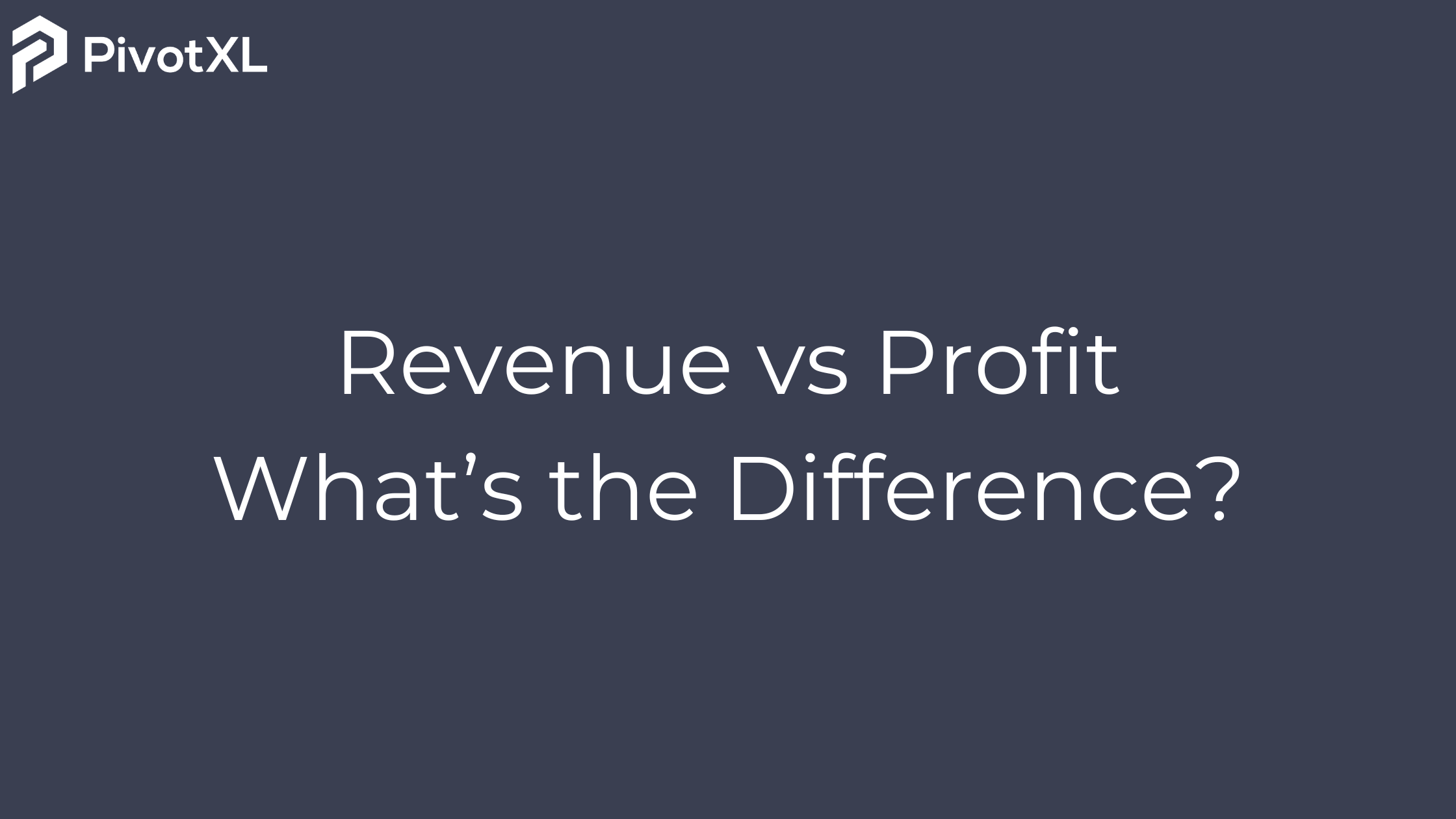Understanding the difference between revenue and profit is crucial for evaluating your business’s financial health. While they are often used interchangeably, they serve distinct roles in financial analysis.
Revenue is the total income generated from your customers before subtracting any costs. It’s the top line of your financial statement, reflecting how much money your business brings in from operations.
Profit, on the other hand, is what remains after deducting all expenses like production costs, employee wages, and operational fees. It’s the net income that contributes directly to business growth.
What Is Revenue on the Income Statement?
Revenue, also known as the top line, represents the total income your business earns from selling goods or services before any deductions such as discounts or returns.
On an income statement, revenue is the first figure listed and serves as the foundation for financial calculations. Whether derived from sales, services, or production, revenue captures the full amount earned before accounting for costs such as production expenses, wages, and overhead.
Although revenue provides a snapshot of the money flowing into your business, it does not account for the expenses associated with generating that income. To fully understand your financial position, you need to analyze both revenue and profit.
Types of Revenue
Revenue is not a one-size-fits-all metric. Different revenue types offer insights into various aspects of your business operations.
Total Revenue
Total revenue is the complete amount of income your business generates before any deductions. It includes earnings from customers, products, services, and other income sources. However, because it does not account for costs, total revenue is not always a reliable indicator of financial health.
Net Revenue
Net revenue adjusts for deductions such as returns, allowances, and discounts, providing a clearer picture of your actual income. Unlike total revenue, net revenue reflects the amount your business truly generates after accounting for reductions. This makes it a more accurate measure of financial performance.
Gross Revenue
Gross revenue represents the total sales generated by your core business operations without deductions for expenses. Unlike total revenue, which includes all income sources, gross revenue is limited to core business activities like selling products or services. Although it provides an important measure of sales performance, it does not indicate profitability.
Average Revenue Per Person (ARPP)
ARPP measures the income generated per customer or user. It is calculated by dividing total revenue by the number of customers served. This metric helps businesses identify spending trends and strategies to increase revenue per customer.
Annual Recurring Revenue (ARR)
ARR tracks the predictable, recurring income a business earns annually. It is particularly important for companies with subscription services or long-term contracts, as it helps forecast financial performance. Investors and management teams often rely on ARR to gauge business stability and growth potential.
Monthly Recurring Revenue (MRR)
MRR measures the consistent monthly revenue generated by a business. It is especially critical for subscription-based companies, offering a more frequent assessment of financial health compared to ARR. By tracking MRR, businesses can monitor growth trends and make quick adjustments.
What Is Profit on the Income Statement?
Profit, often referred to as the bottom line, is what remains after subtracting all expenses from total revenue. While revenue indicates how much money a business generates, profit shows how much is retained after covering production, operations, management, and investment costs.
On an income statement, profit is the final figure that determines business success. It directly reflects how efficiently a company balances revenue and expenses.
Types of Profit
Profit can be analyzed in different ways, depending on how it is calculated. Each type of profit provides a different perspective on business performance.
Gross Profit
Gross profit measures how much a business earns from its core operations before accounting for indirect costs like rent, utilities, and administrative expenses. It is calculated by subtracting the cost of goods sold (COGS) from total revenue.
Formula:
Gross Profit = Total Revenue – COGS
Operating Profit
Operating profit, also known as operating income, accounts for operating expenses such as wages, rent, and utilities. It is calculated by subtracting these costs from gross profit. Operating profit reflects the profitability of regular business activities without factoring in taxes or interest payments.
Formula:
Operating Profit = Gross Profit – Operating Expenses
Net Profit
Net profit, often referred to as the bottom line, is the final figure after deducting all expenses—including taxes, interest, and one-time costs—from total revenue. It provides the most precise measure of profitability.
Formula:
Net Profit = Operating Profit – Interest and Taxes
Profit Margin
Profit margin is a profitability ratio that shows how much of your revenue is converted into profit. It is calculated by dividing net profit by total revenue and is expressed as a percentage. A higher profit margin indicates better revenue generation and cost control.
Formula:
Profit Margin = (Net Profit / Total Revenue) × 100%
Bottom Line
The term “bottom line” refers to net profit and represents the most important figure on an income statement. It shows the total earnings remaining after all financial obligations are met. Investors and management use the bottom line to assess financial stability and make strategic decisions.
Revenue vs. Profit: Complete Overview
What Impacts Revenue and Profit?
Revenue is influenced by product pricing, customer volume, and market competition. Selling more products or services increases revenue, but high revenue does not always lead to high profit if expenses are equally high.
Which Is More Important: Revenue or Profit?
While both revenue and profit are essential, profit is a more critical metric for evaluating long-term sustainability. Revenue indicates market demand and income flow, but profit reveals how effectively a company manages expenses. Investors and stakeholders typically prioritize profit when assessing a company’s viability.
Reporting Revenue vs. Profit
Revenue appears at the top of an income statement, serving as the starting point for financial analysis. Expenses are then deducted in stages (COGS, operating expenses, taxes) until net profit is calculated at the bottom.
How to Calculate Revenue to Profit
Calculating revenue and profit is essential for financial planning. Each stage of expense deduction helps determine how much profit a business retains.
- Calculate Total Revenue
- Formula: Total Revenue = Price per Unit × Number of Units Sold
- Subtract Direct Costs (COGS)
- Formula: Gross Profit = Total Revenue – COGS
- Subtract Operating Expenses
- Formula: Operating Profit = Gross Profit – Operating Expenses
- Subtract Interest and Taxes
- Formula: Net Profit = Operating Profit – Interest and Taxes
Example of Revenue vs. Profit
Imagine a candle-making business sells 1,000 candles at $20 each.
- Total Revenue = 1,000 × $20 = $20,000
- COGS = 1,000 × $10 = $10,000
- Gross Profit = $20,000 – $10,000 = $10,000
- Operating Expenses = $3,000
- Operating Profit = $10,000 – $3,000 = $7,000
- Taxes & Interest = $2,000
- Net Profit = $7,000 – $2,000 = $5,000
Analyze and Calculate Revenue vs. Profit with PivotXL
Revenue and profit are vital for understanding business performance. With PivotXL, businesses can analyze financial trends, optimize reporting, and ensure long-term profitability. Whether tracking revenue growth or improving cost efficiency, having the right tools makes all the difference.




